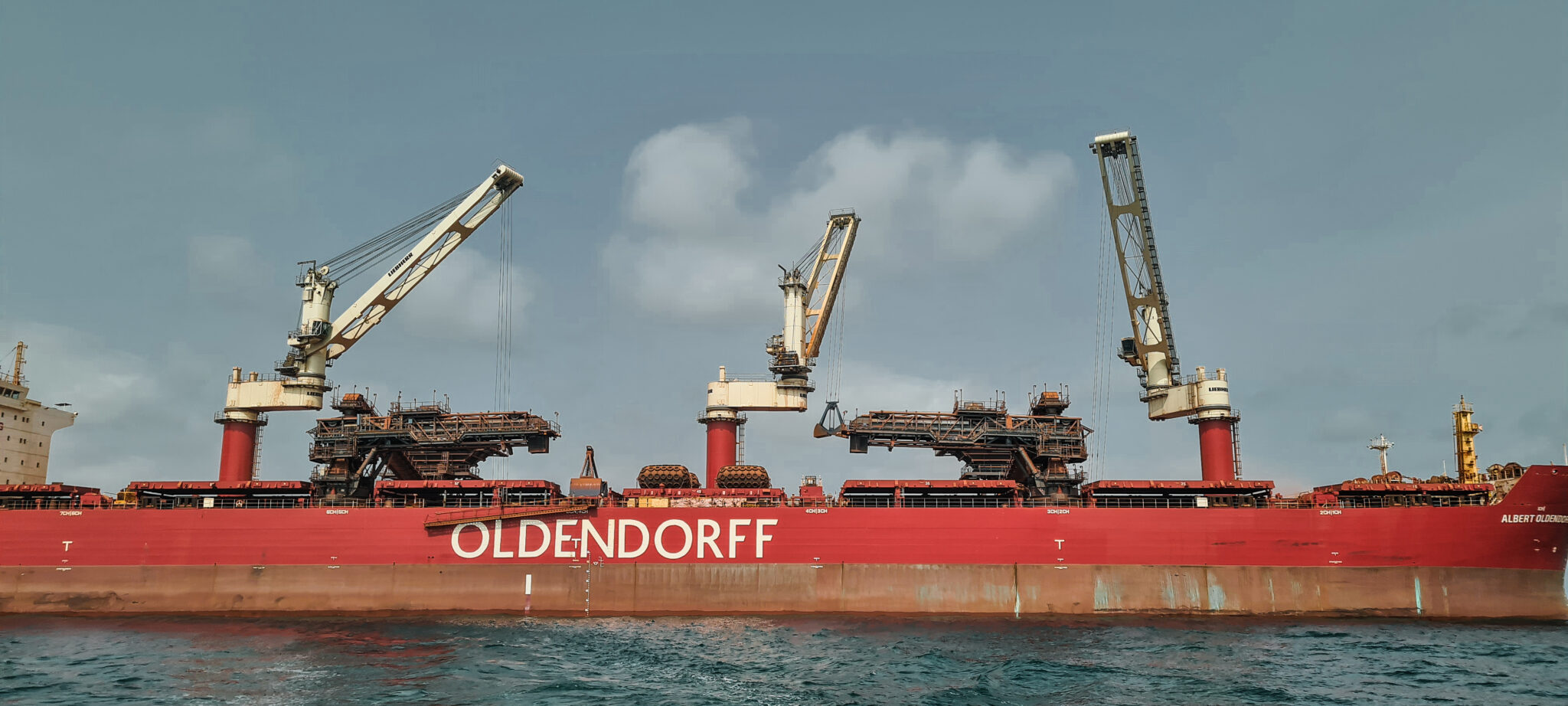International Container Terminal Services, Inc. (ICTSI) continues to go above and beyond its concession obligations with the Philippine Ports Authority, adding another berth at the Manila International Container Terminal (MICT) – the Philippines’ premiere gateway for international trade.
Currently under phase two development, MICT’s berth 8 has a design depth of 15 meters that will enable the terminal to handle foreign ultra large container vessels with capacities of up to 18,000 TEUs. MICT is capable of handling neo-Panamax ships through berths 6 and 7, which are operated by five quay cranes (QC). A sixth crane is scheduled to arrive in July and will be operational within the year. Berth 8 will operate with a minimum of four QCs – two of which will be delivered in 2025.
“We are optimistic of the prospect of welcoming ultra large container vessels at the Port of Manila and are preparing to accommodate the added volume that these more efficient ships will bring. With these developments, our goal is to outpace demand and ensure the efficient flow of trade from the port to the local supply chain. We thank the PPA for supporting our initiatives to continuously raise the standard of ports and maritime trade in the country,” said Christian R. Gonzalez, ICTSI executive vice president.
The expansion will also increase MICT’s capacity by 200,000 TEUs to 3.5 million TEUs, which will be key in addressing the increase in cargo volume as the country’s economy fully reopens. In addition, the new berth will add 400 meters of quay along with 12 hectares of yard space that will be constructed in phases.
Aside from infrastructure developments, ICTSI continues to invest in technology to make MICT’s operations more efficient.
ICTSI launched a mobile app last year that grants port users visibility over their cargo. The ICTSI App enables customers to monitor the status of their shipment across ICTSI’s network of terminals in the Philippines, which include MICT, NorthPort, Subic Bay International Terminals (SBITC), and Mindanao Container Terminal (MCT). Other ICTSI terminals in the country will soon be covered by the app.
“Giving our customers visibility over their cargo empowers them to make better business decisions. It also enhances stakeholder coordination, which could help us further improve the services that we offer,” explained Mr. Gonzalez.
In 1988, International Container Terminal Services, Inc. won the 25 + 25 years concession to operate the Manila International Container Terminal in an international tender. Since ICTSI’s takeover, MICT has increased its annual capacity five-fold, expanded its container handling fleet to make it the largest and most modern container terminal in the Philippines, and switched from a manual control system to an integrated real-time IT terminal control system. MICT is ICTSI’s flagship operation.
Headquartered and established in 1988 in Manila, Philippines, International Container Terminal Services, Inc. is in the business of port development, management and operations. ICTSI’s portfolio of terminals and projects are located in developed and emerging market economies in the Asia Pacific, the Americas, and Europe, the Middle East and Africa. Independent with no shipping or consignee-related interests, ICTSI works and transacts transparently with all stakeholders of the supply chain. ICTSI continues to receive global acclaim for its public-private partnerships, which are focused on sustainable development, and supported by corporate social responsibility initiatives.



